
Planetary Picture of the Day
Week of May 22, 2023
Planetary science extravaganza this week: a comet, Mars, Io, and a pair of Saturnian moons.
Monday, May 22, 2023
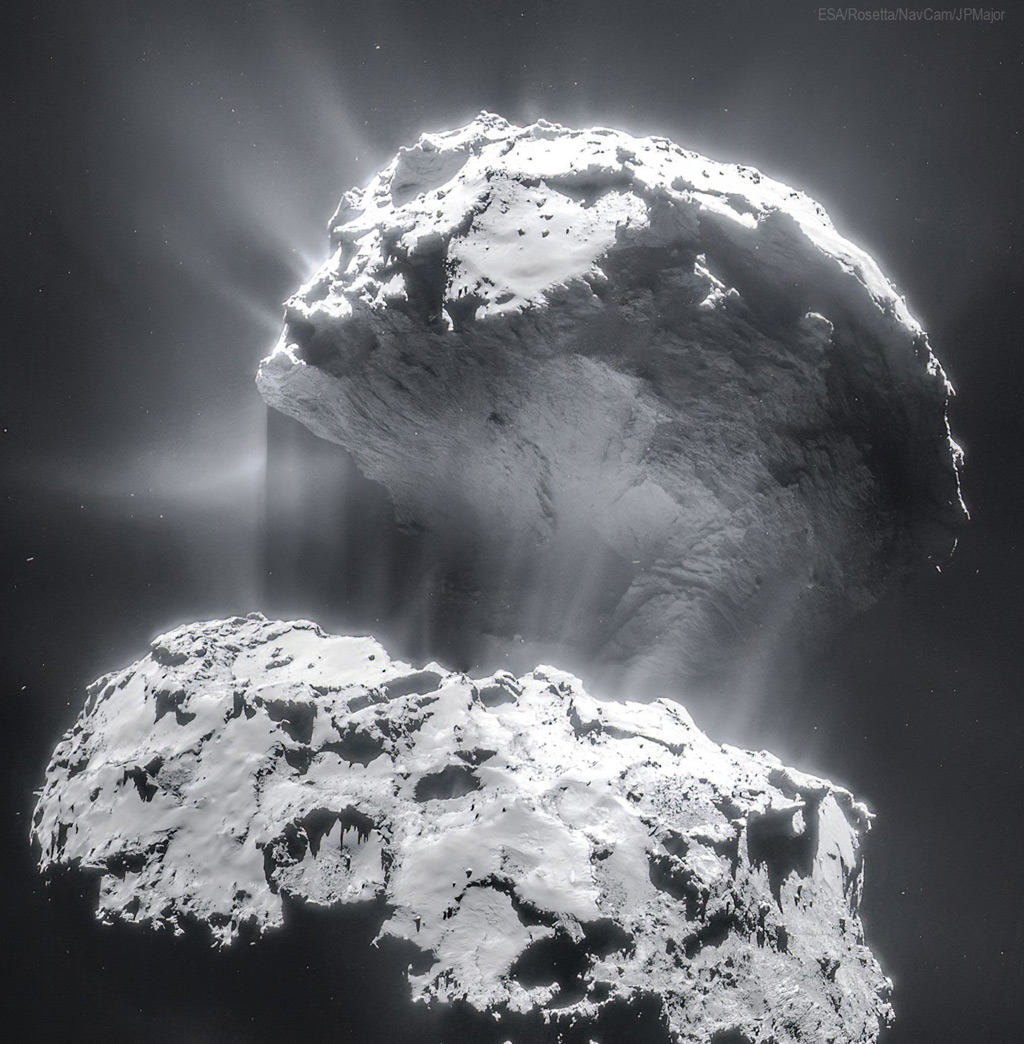
Comet CG Creates Its Dust Tail
Where do comet tails come from? There are no obvious places on the nuclei of comets from which the jets that create comet tails emanate. One of the best images of emerging jets is shown in the featured picture, taken in 2015 by ESA's robotic Rosetta spacecraft that orbited Comet 67P/Churyumov-Gerasimenko (Comet CG) from 2014 to 2016.
The picture shows plumes of gas and dust escaping numerous places from Comet CG's nucleus as it neared the Sun and heated up. The comet has two prominent lobes, the larger one spanning about 4 kilometers, and a smaller 2.5-kilometer lobe connected by a narrow neck. Analyses indicate that evaporation must be taking place well inside the comet's surface to create the jets of dust and ice that we see emitted through the surface.
Comet CG (also known as Comet 67P) loses in jets about a meter of radius during each of its 6.44-year orbits around the Sun, a rate at which will completely destroy the comet in only thousands of years. In 2016, Rosetta's mission ended with a controlled impact onto Comet CG's surface.
Tuesday, May 23, 2023
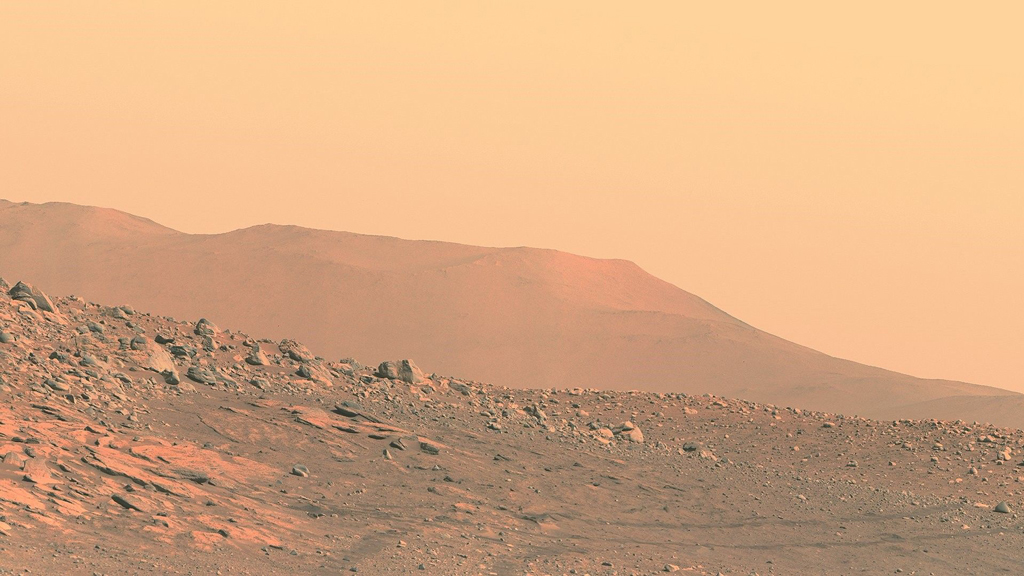
Martian Afternoon
This scene is a composite of two Right Mastcam-Z photos, taken by NASA's Perseverance rover on Saturday, 13 May 2023, at a local solar time of about 2:20 pm.
Colour adjusted to better represent human vision.
Wednesday, May 24, 2023
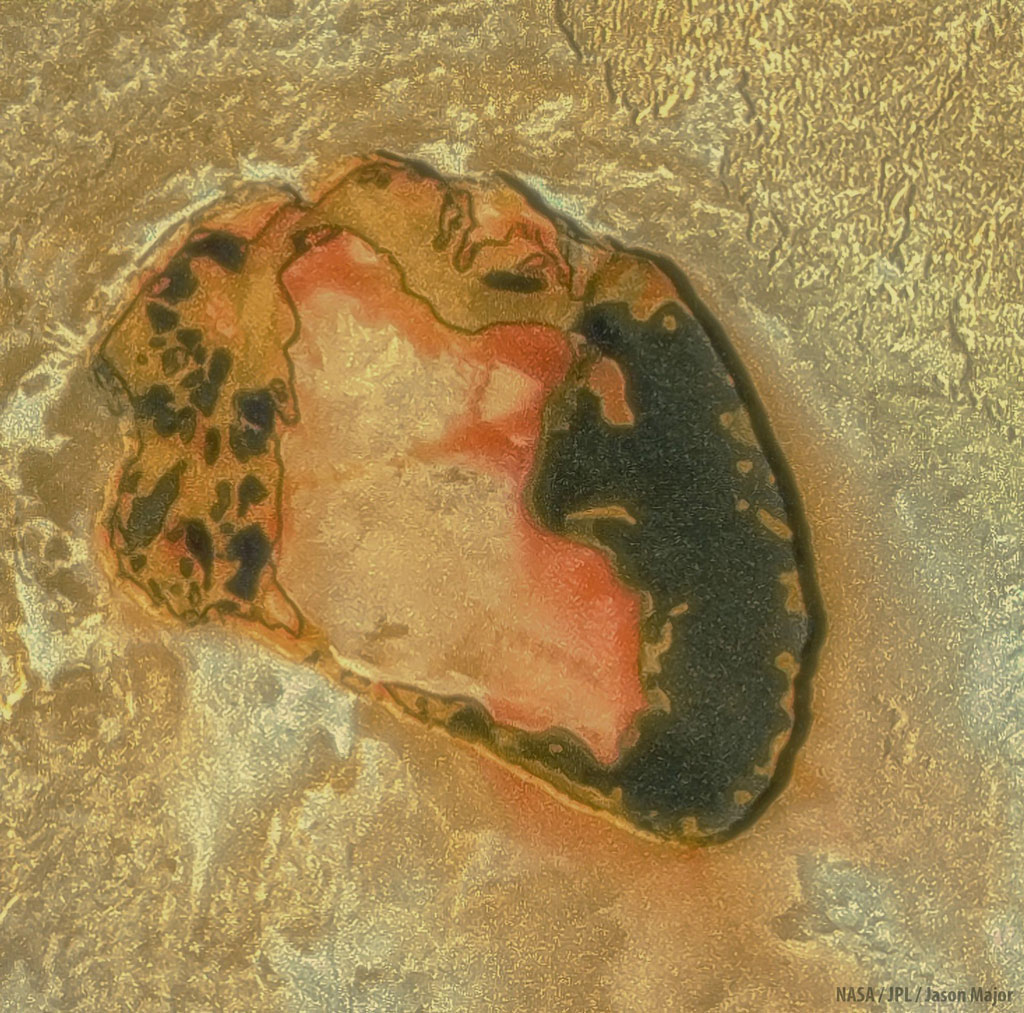
Colorful Crater
Tupan Patera, an 80-km-wide volcanic crater on Jupiter's moon Io imaged by NASA's Galileo spacecraft on Oct. 15, 2001. Approximate natural-color view; color variations come from sulfur compounds in Io's lava. The crater's walls drop ~900 meters.
Thursday, May 25, 2023
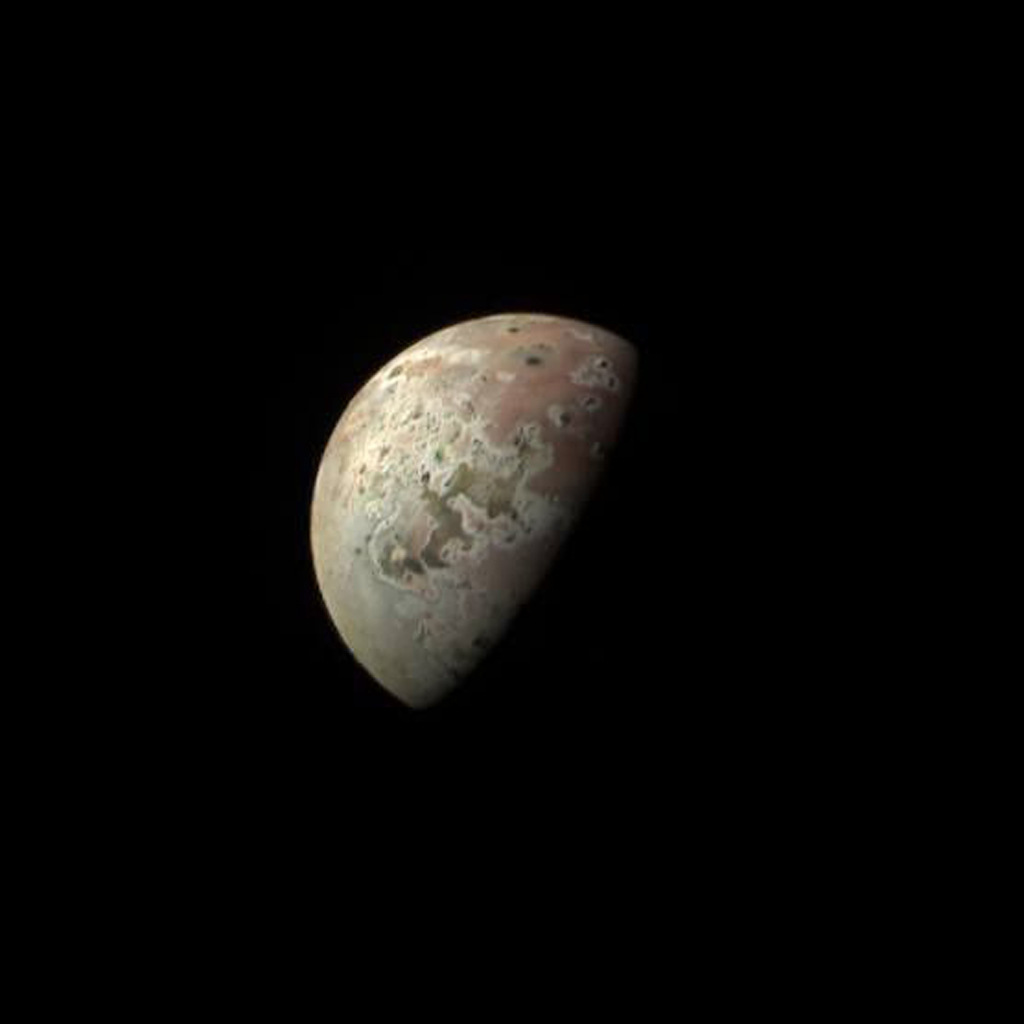
Io from Perijove 51
On May 16, 2023, the JunoCam on board NASA's Juno spacecraft captured this view of Jupiter's volcanic moon Io during the 51st perijove (closest pass to Jupiter).
Friday, May 26, 2023
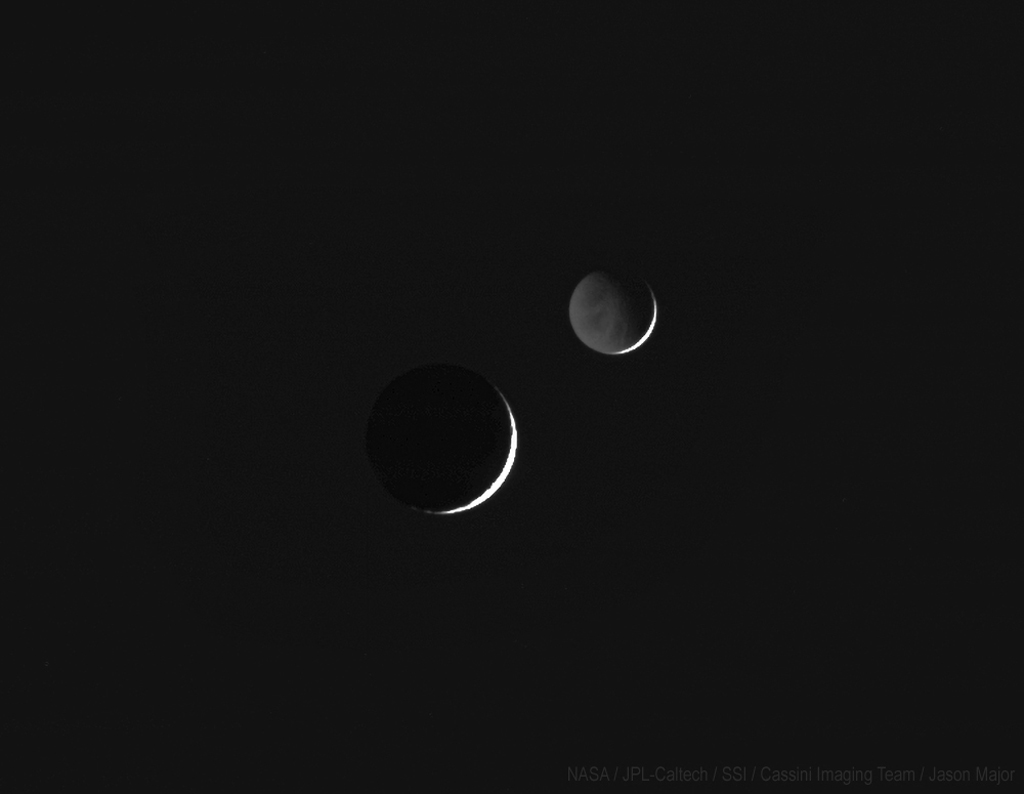
Saturnian Moons
Saturn's moons Rhea (foreground) and Dione (background) crescent-lit by sunlight and, in Dione's case, reflected light from Saturn, imaged with the narrow-angle camera on Cassini on March 27, 2006. The two moons were about 630,600 km apart at the time.





